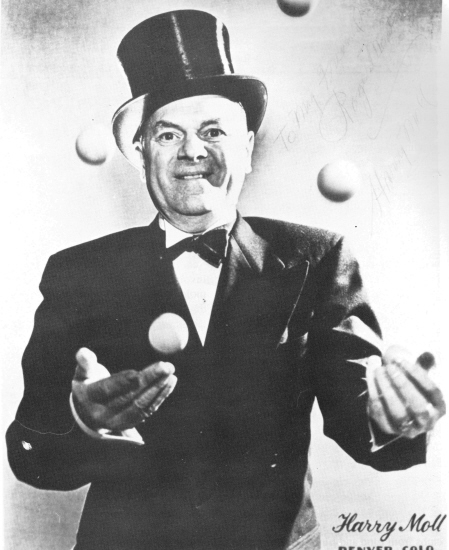 |
Page 55 Summer 1987
|
Lind
would select the tree he wanted for production and have it cut and
He
worked in ounces, not grams, and used an inexpensive kitchen scale
to match weights of clubs. He was proud of his ability to
"eyeball" precise measurements, and relied on skill and
experience rather than calipers. As did most of the craftsmen of the
time, Lind used templates and patterns made of a stiff, thin
material called fiberboard. The weakness of the construction was the
fact that he hollowed out the clubs by hand with a rotary burr, a
machine on which he lost three fingers. The thickness of the club
wall was not always uniform, and the light clubs couldn't take too
much punishment.
The
third step in the Lind evolution of the club was to lighten it to 11
ounces, which was just about heaven for the jugglers who could
remember performing with solid clubs. Lighter weight, durability and
improved balance made the Lind club the final stage in achieving the
perfect wooden club.
His
14-ounce club, named the "May" model in honor of Bobby
May, became his standard. One of the advantages of early juggling
get-togethers was that every juggler used Lind Clubs. Earlier, many
jugglers made their own of barrel staves or sticks with a knob on
the end. Club passing between strangers was made easier as
uniformity of equipment grew to be the norm.
In
1967, when Harry Lind died, the mantle of quality club manufacturing
was already passing to Stu Raynolds, friend of the Lind family, who
introduced a new age of high-tech production materials.
Balls
Go To War In
the vaudeville era, a juggler might have to wait a couple of months
for a set of Lind clubs or settle for clubs from smaller makers. But
there was at least an assured source. Little thought was given to
balls until World War II. Suddenly, it seemed, all the rubber in the
country had been siphoned off for the war effort. Jugglers saw their
equipment ground into the dust on foreign shores under the tread of
marching armies.
In
reading the archives of this time, one feels that the lack of props
or the need for better ones was the catalyst that brought jugglers
together. The rubber shortage, like the simultaneous shortage of
foil paper to decorate clubs, tightened the juggling network.
Eventually
a source of juggling balls |
 |